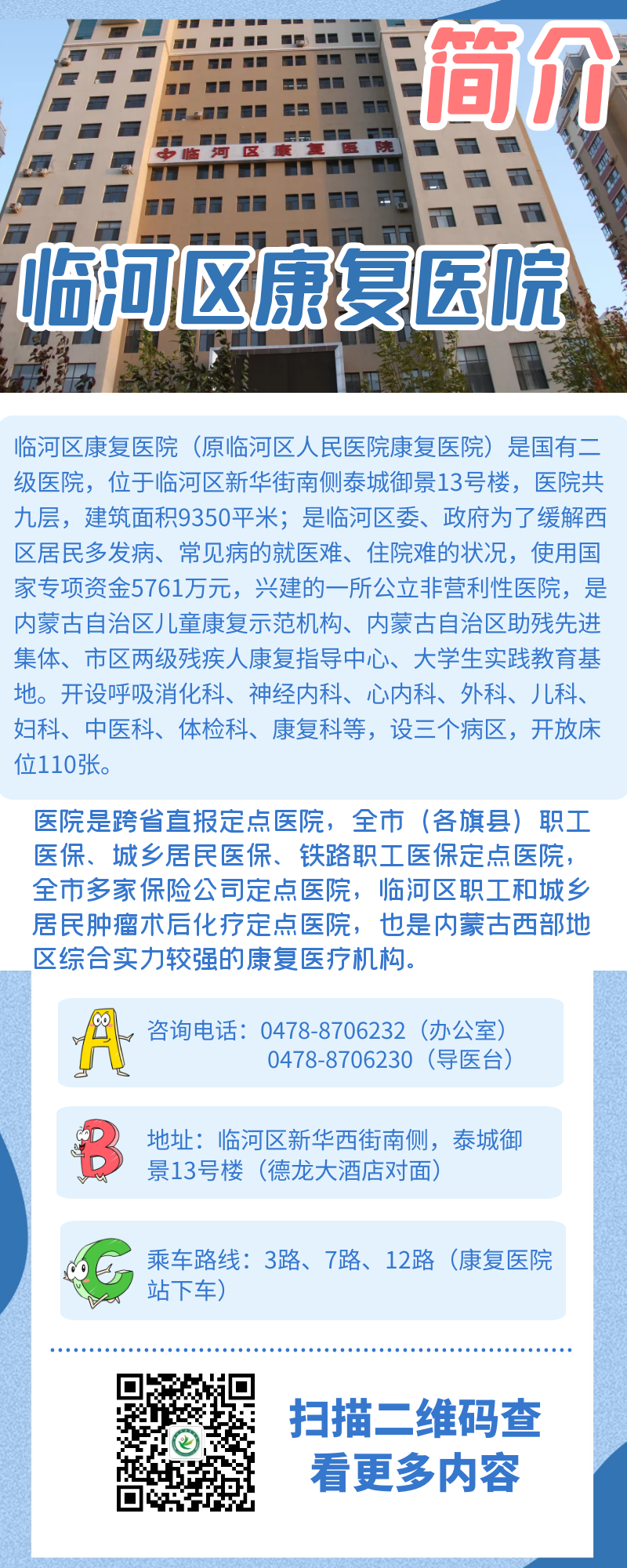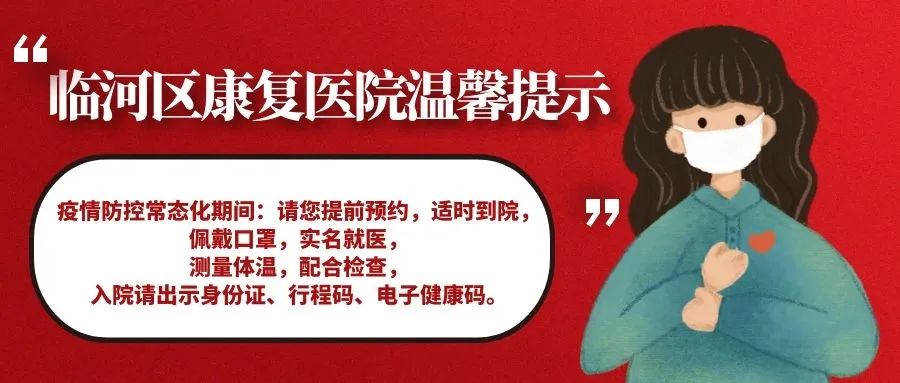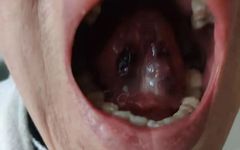Click the blue text to follow us

Sublingual Bloodletting Treatment for Qi Stagnation and Blood Stasis Syndrome
Patient: Ms. Fan, 52 years old.
Initial Consultation on February 21, 2022. Chief complaint: Chest tightness after exercise for over 3 months.
Observation: Patient appears in fair spirits, slightly overweight, complexion dark, tongue red, sublingual veins appear purple.
Auscultation: Cardiac auscultation reveals occasional premature beats, no other abnormal sounds or odors.
Inquiry: The patient reports experiencing chest tightness after exercise for the past three months, which worsened during the New Year due to fatigue and greasy food. In the past week, the chest tightness has intensified, accompanied by paroxysmal palpitations, poor sleep quality with vivid dreams, occasional tongue numbness, normal appetite, slightly dry stools, and normal urination.
Pulse Diagnosis: Pulse is wiry and rough.
Auxiliary examination: ECG shows: (1) Sinus rhythm; (2) ST-T changes in leads V2-V5; (3) Atrial premature beats.
Western diagnosis: 1. Atrial premature beats; 2. Myocardial ischemia.
Traditional Chinese Medicine (TCM) diagnosis: Chest obstruction, palpitations. Qi stagnation and blood stasis syndrome.
Treatment Method: Invigorate blood circulation, resolve stasis, and regulate Qi.
Prescription: Xuefu Zhuyu Decoction (Blood Mansion Drive Out Stasis Decoction) modified, 5 doses decocted in water.
External Treatment: After disinfection, puncture the sublingual veins and perform bloodletting of approximately 10ml.
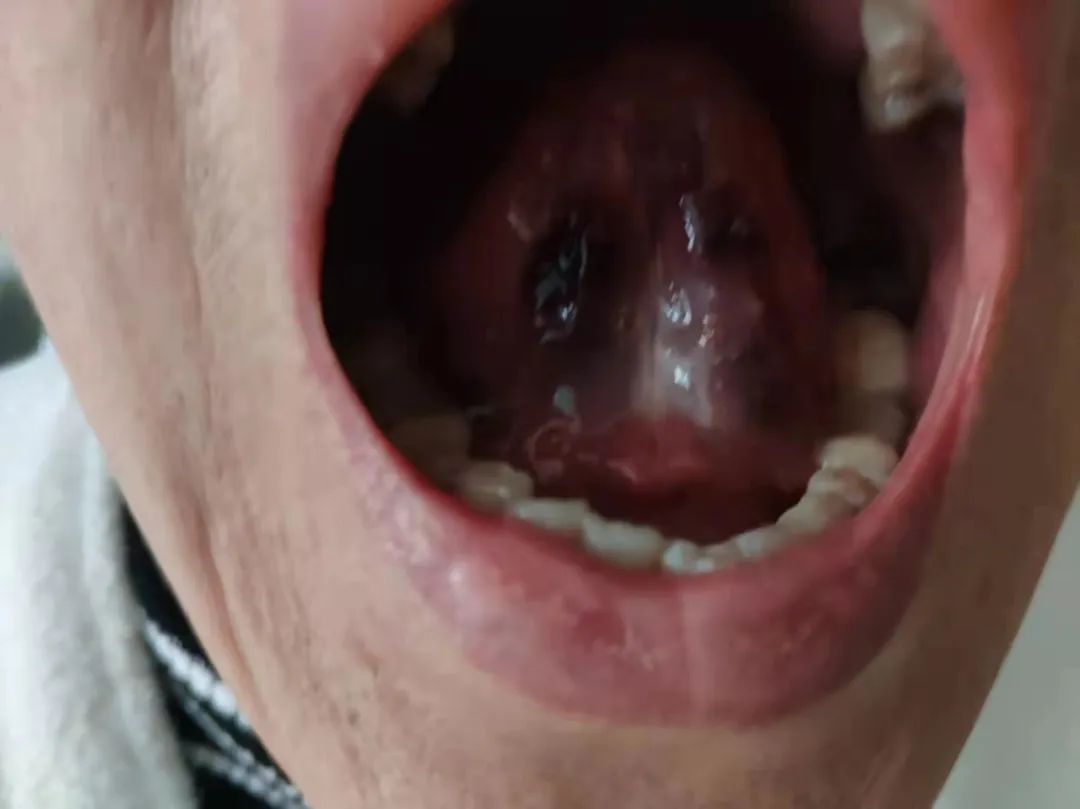
Photo after bloodletting on February 21
Second Consultation on February 26, 2022: The patient reports good spirits, improvement in exercise-related chest tightness, one episode of palpitations, improved sleep quality, tongue numbness worsened for 3 days post-bloodletting, currently improving, tongue pale, large areas of purple stasis under the tongue, pulse wiry and rough, no other abnormalities noted. The original prescription was continued for another 5 doses.
Third Consultation on March 1, 2022: The patient reports good spirits, significant improvement in exercise-related chest tightness, no episodes of palpitations, improved sleep quality, relief of tongue numbness, tongue pale with thin white coating, normal color of sublingual veins, pulse slightly submerged at the left cun and guan positions, no other abnormalities noted. Advised to take Shen Song Yang Xin capsules for one month to observe effects; if sublingual blood stasis recurs, repeat bloodletting treatment.
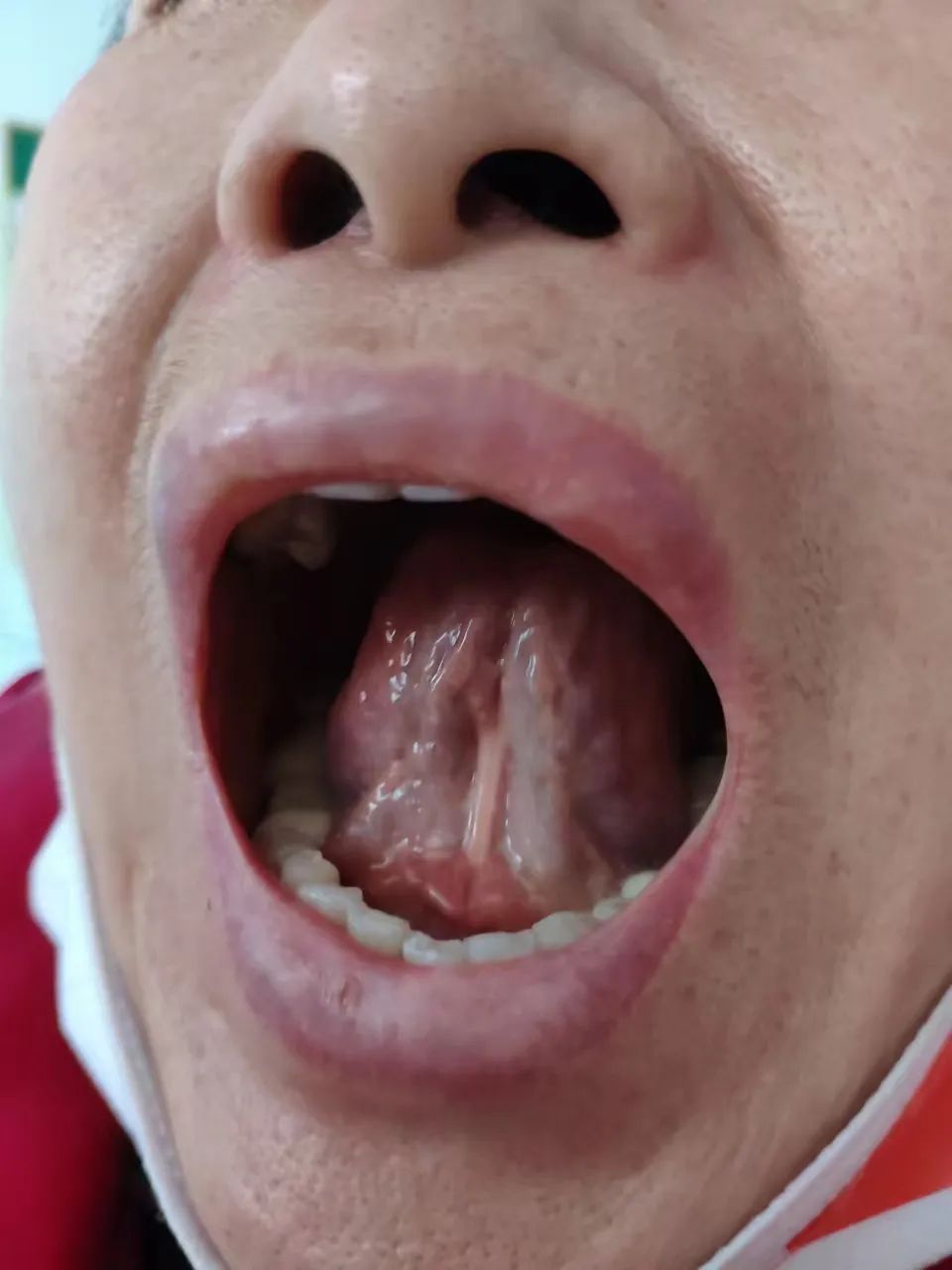
Photo from March 1

Observing the Sublingual Veins to Understand Qi and Blood Flow
As our living standards continue to improve, the population suffering from hypertension, hyperlipidemia, and hyperglycemia has significantly increased, making cardiovascular and cerebrovascular diseases the leading health threat. According to the “2020 Report on Cardiovascular Health and Disease in China,” the prevalence of cardiovascular diseases in our country is on the rise, with an estimated 330 million people currently affected, including: 245 million with hypertension, 12 million with stroke, 11.39 million with coronary heart disease, 5 million with pulmonary heart disease, 8.9 million with heart failure, 4.87 million with atrial fibrillation, 2.5 million with rheumatic heart disease, 2 million with congenital heart disease, and 45.3 million with peripheral artery disease. In 2018, the mortality rate from cardiovascular diseases remained the highest, surpassing that of tumors and other diseases; deaths from cardiovascular diseases accounted for 46.66% and 43.81% of total deaths in rural and urban areas, respectively, meaning that 2 out of every 5 deaths were due to cardiovascular diseases. The report indicates that the absolute number of people suffering from hypertension, dyslipidemia, diabetes, and obesity continues to rise due to widespread lifestyle risk factors such as unhealthy diets, insufficient physical activity, and smoking, which will further increase the incidence and mortality of cardiovascular diseases in our country.
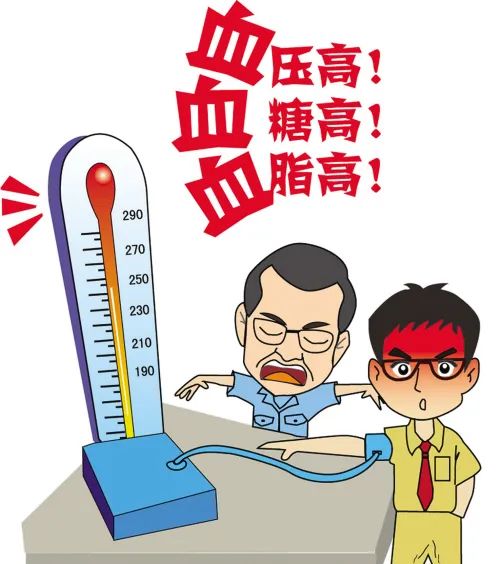
Traditional Chinese Medicine (TCM) has had a profound understanding of cardiovascular and cerebrovascular diseases for over two thousand years. The “Huangdi Neijing – Suwen” states, “The heart is the sovereign organ, from which the spirit emerges,” “The heart governs blood vessels,” “Its manifestation is on the face,” and “It opens to the tongue.” The heart governs blood vessels and nourishes the five organs and six bowels, the twelve meridians, three hundred sixty-five collaterals, limbs, and the nine orifices, all relying on its blood supply, indicating the heart’s primary position among the organs and meridians, hence the term “sovereign organ.” In the absence of ultrasound or CT scans, ancient practitioners assessed the state of Qi and blood flow through tongue observation, particularly the sublingual veins.

In healthy individuals, there are two longitudinal sublingual veins located on either side of the lingual frenulum, known as the sublingual veins. Also referred to as “stasis veins,” the mucous membrane along the midline under the tongue forms a prominent fold connecting to the floor of the mouth, called the lingual frenulum. On either side of the frenulum, through the mucous membrane, the superficial blue sublingual veins can be seen. In TCM, these are called sublingual veins or tongue veins. In healthy individuals, the sublingual veins are visible, with a diameter not exceeding 2.7 cm and a length not exceeding three-fifths of the distance from the tip of the tongue to the sublingual tubercle. The color is dark red. The veins should not be engorged, constricted, twisted, or proliferated, and should be arranged in an orderly manner. The vast majority are single branches, with very few double branches appearing.
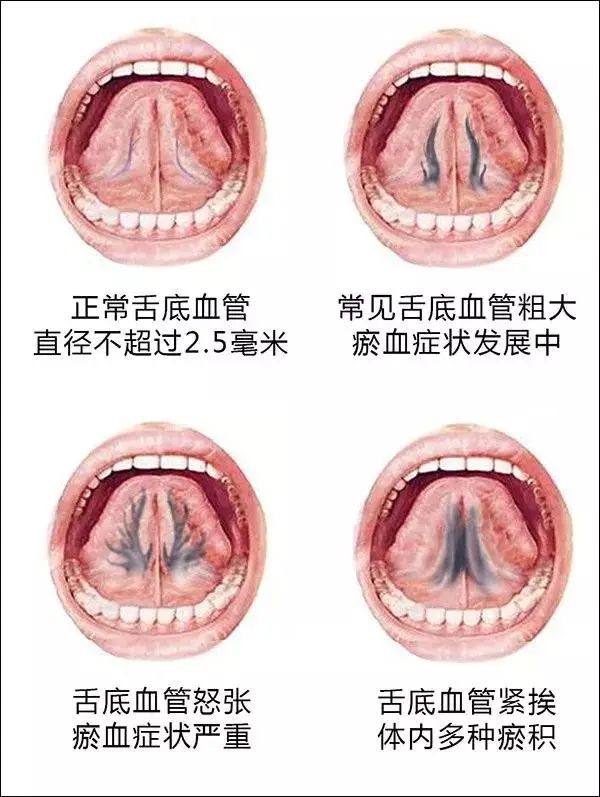
When the sublingual veins are swollen, or appear blue-purple, dark red, or purple-black, or when the sublingual veins are small and form a dark red or purple network, or when they are varicose like purple beads of varying sizes, these are all signs of blood stasis. The causes may include Qi stagnation, cold accumulation, heat depression, phlegm dampness, Qi deficiency, or Yang deficiency, which need to be analyzed in conjunction with other symptoms. When the sublingual veins are obstructed, it indicates varying degrees of obstruction in the meridians and organs, affecting the health of the body. Many people are tired of long-term use of Dan Shen (Salvia miltiorrhiza), San Qi (Panax notoginseng), and aspirin; is there a quicker method to remove the stasis?

Releasing Sublingual Stasis for Unobstructed Flow
The traditional TCM technique of sublingual bloodletting is characterized by rapid stasis removal, safety, reliability, and minimal side effects. In TCM acupuncture, there are two extraordinary points under the tongue, Jin Jin on the left and Yu Ye on the right, typically treated with a three-edged needle for issues such as “stiff tongue, swollen tongue, oral ulcers, throat closure, diabetes, vomiting, diarrhea, and aphasia.” The sublingual superficial veins are the blood vessels located at the Jin Jin and Yu Ye points, merging with the deep veins of the tongue near the root, directly draining into the internal jugular vein. The internal jugular vein collects venous blood from the cranial cavity; thus, bloodletting at the sublingual vein reduces pressure in the internal jugular vein, allowing for faster blood flow in the cranial vessels and quicker removal of metabolic waste from the cranial cavity. This explains why some patients feel clearer-headed and more alert after bloodletting, as fresh blood circulation increases. Some patients with cerebral infarction report immediate improvement in tongue mobility and fluency of speech after bloodletting at Jin Jin and Yu Ye, which is related to improved blood supply to the brain and tongue. Additionally, it is well-known that the sublingual administration technique in Western medicine is also based on the short pathway of sublingual venous return to the heart, allowing for rapid effects, as seen with sublingual nitroglycerin for angina pectoris emergencies.
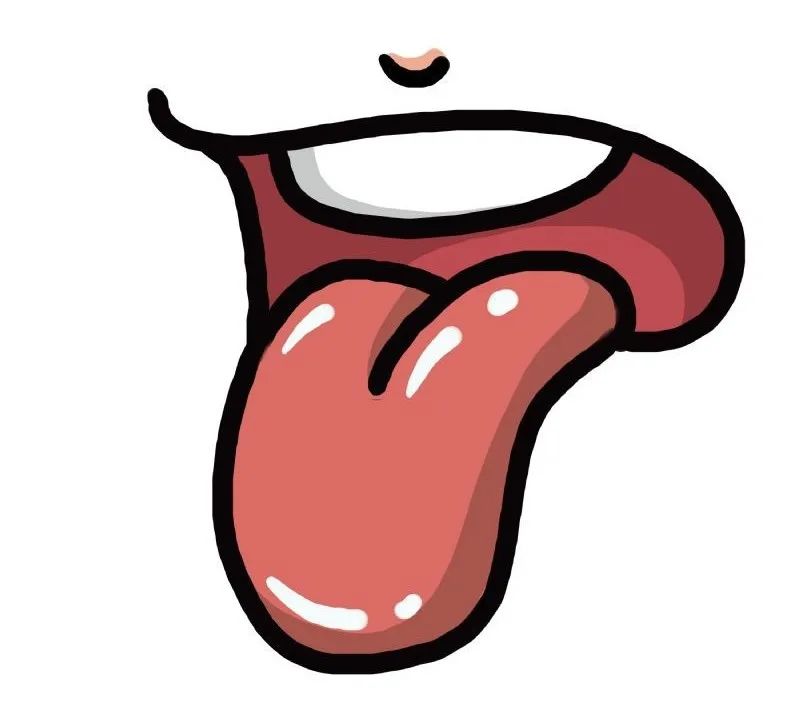
By performing sublingual bloodletting, one can quickly clear blood stasis, alleviate stasis obstructing the heart meridian, allowing Qi to flow, nourishing the five organs and six bowels, and benefiting the limbs and body. This treatment has a good therapeutic effect on various diseases caused by blood stasis. Li Daoping, Deputy Director of the TCM Department at the Rehabilitation Hospital in Linhe District, has mastered sublingual bloodletting to remove stasis and detoxify. If you notice significant blood stasis based on the above images, feel free to give it a try.

Li Daoping

Department of Traditional Chinese Medicine
Deputy Chief Physician
Deputy Director of the Medical Affairs Department
Graduated from Inner Mongolia Medical University, has been engaged in TCM work since graduation, studied in the first TCM general practitioner class in Inner Mongolia Autonomous Region in 2009, and participated in the academic thought and clinical experience study class of Master of Traditional Chinese Medicine Lu Zhizheng in 2020. He is a council member of the Osteoporosis Professional Committee of the World Federation of Chinese Medicine Societies and a student of the famous TCM inheritance studio in Bayannur City. He specializes in TCM syndrome differentiation and treatment of internal medicine, gynecology, pediatrics, osteoporosis, and joint pain.
Text by | Li Daoping

